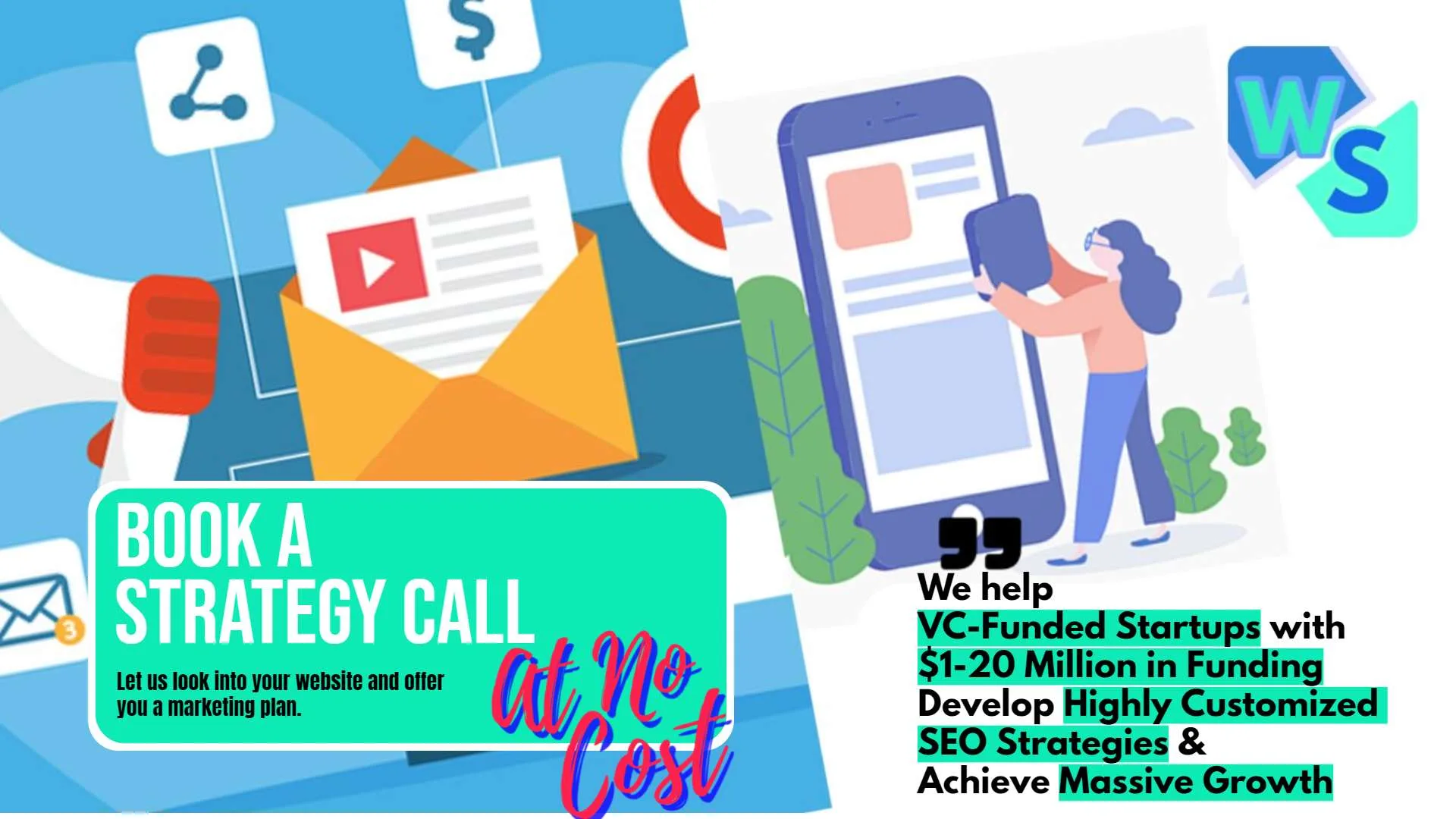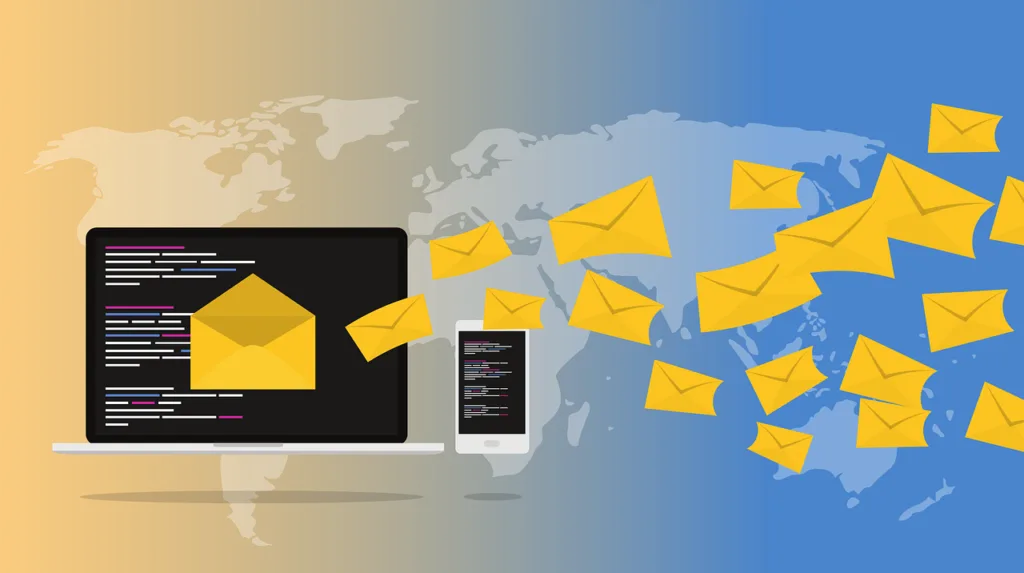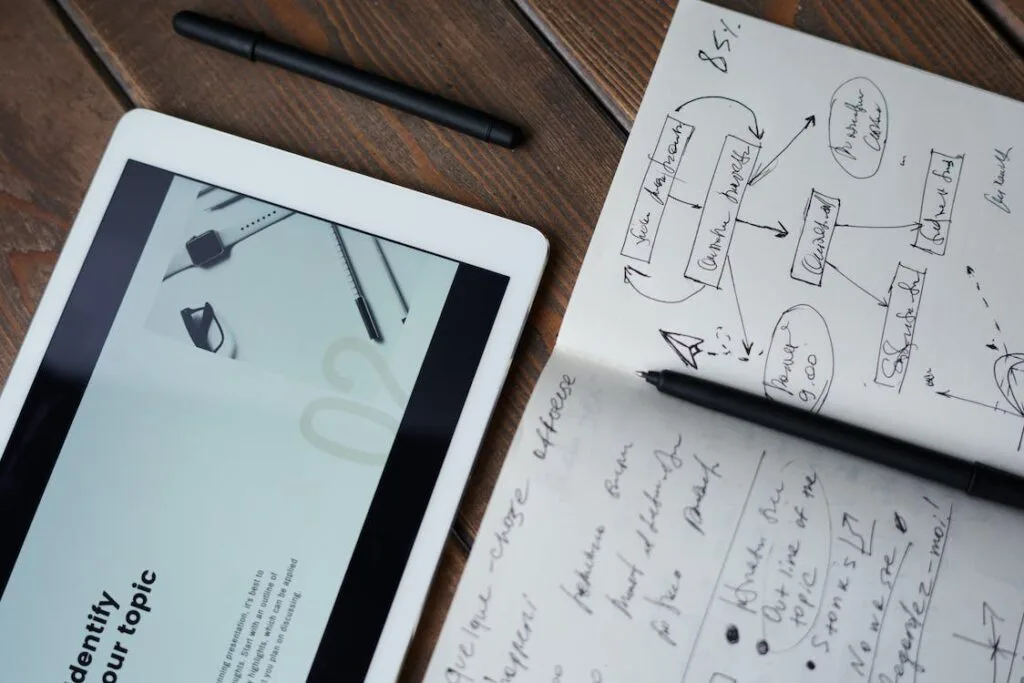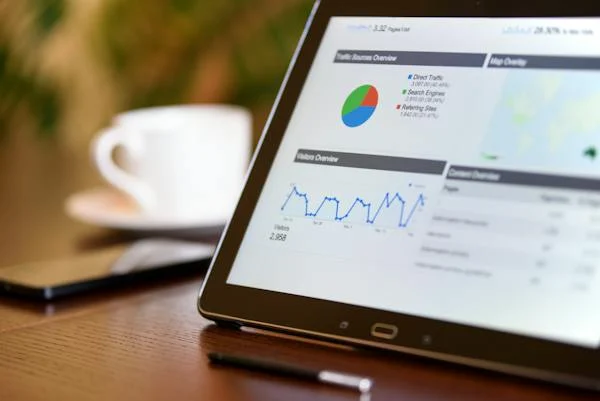This Article has been revised, edited and added to, by Poulomi Chakraborty.
- The Basics of Email Marketing Automation
- Implementing Email Marketing Automation: A Step-by-Step Guide
- Setting Clear Goals and Objectives
- Choosing the Right Automation Platform
- Building Your Email List
- Segmenting Your Audience
- Designing Your Automated Workflows
- Welcome Series
- Cart Abandonment Reminders
- Post-Purchase Follow-Ups
- Re-Engagement Campaigns
- Personalizing Your Emails
- Testing and Optimizing Your Campaigns
- Real-World Example: Airbnb
- Advanced Strategies for Email Marketing Automation
- Overcoming Common Challenges in Email Marketing Automation
- Ensuring Data Privacy and Compliance
- Maintaining Data Quality
- Avoiding Over-Automation
- Real-World Example: Everlane
- Ensuring Consistent Branding
- Integrating with Other Marketing Channels
- Real-World Example: Patagonia
- Measuring and Analyzing Performance
- Adapting to Changing Consumer Preferences
- Real-World Example: Spotify
- The Future of Email Marketing Automation
- Artificial Intelligence and Machine Learning
- Hyper-Personalization
- Real-World Example: Amazon
- Enhanced Automation Workflows
- Integration with Omnichannel Marketing
- Voice and Conversational Marketing
- Real-World Example: Starbucks
- Predictive Analytics
- Increased Focus on Data Privacy
- Real-World Example: Apple
- Emphasis on Engagement Metrics
- Conclusion
Email marketing has always been a powerful tool for businesses to connect with their audience. However, as the digital landscape evolves, the demands and expectations of consumers have changed significantly. In the past, sending out a mass email to a large list of recipients was enough to get noticed. Today, with inboxes flooded with emails from numerous brands, standing out requires more than just catchy subject lines and compelling content. This is where automation steps in to revolutionize the game.
Automation in email marketing is not just about sending emails automatically. It’s about sending the right message, to the right person, at the right time. Think of it as the difference between a general store and a personal shopper. The general store offers a variety of goods, hoping you’ll find what you need. A personal shopper, on the other hand, knows your preferences and curates a selection just for you. Which experience would you prefer?
To understand the impact of automation, consider two businesses: Company A and Company B. Company A relies on traditional email marketing methods, sending out periodic newsletters to their entire list without considering individual preferences or behaviors. Their emails, though well-crafted, are generic. Company B, on the other hand, leverages automation. They segment their audience based on data such as purchase history, browsing behavior, and engagement levels. This allows them to send highly personalized and timely emails, tailored to each recipient’s needs and interests.
The Basics of Email Marketing Automation

What is Email Marketing Automation?
Email marketing automation refers to the use of software and technology to automate the process of sending emails to your subscribers. Unlike traditional email marketing, which requires manually crafting and sending each email, automation allows you to set up email campaigns that run on autopilot.
These automated emails are triggered by specific actions or behaviors, ensuring that they are always relevant and timely.
For instance, if a customer signs up for your newsletter, an automated welcome email series can be triggered to introduce them to your brand, share valuable content, and encourage them to make their first purchase. Similarly, if a customer abandons their shopping cart, an automated reminder can be sent to prompt them to complete the purchase.
The Role of Data in Automation
Data is the backbone of email marketing automation. It enables you to create personalized experiences for your subscribers by understanding their preferences, behaviors, and interactions with your brand. This data can be collected from various sources, including your website, CRM, social media, and previous email interactions.
By analyzing this data, you can segment your audience into different groups based on specific criteria such as demographics, purchase history, and engagement levels. This segmentation allows you to tailor your automated emails to each group, ensuring that the content is relevant and engaging.
Key Components of an Automated Email Campaign
An effective automated email campaign consists of several key components:
1. Triggers
Triggers are the actions or behaviors that initiate the automated email sequence. Common triggers include signing up for a newsletter, making a purchase, abandoning a cart, or clicking on a specific link in an email. By setting up triggers, you can ensure that your emails are sent at the most opportune moments, increasing the likelihood of engagement.
2. Workflows
Workflows are the sequences of emails that are sent based on the triggers. Each workflow is designed to guide the subscriber through a specific journey, such as onboarding, re-engagement, or post-purchase follow-up. For example, an onboarding workflow might include a series of emails that introduce the new subscriber to your brand, share helpful resources, and encourage them to take specific actions.
3. Personalization
Personalization is a crucial element of automated email campaigns. By using the data you have collected, you can tailor the content of your emails to each subscriber’s preferences and behaviors. This can include personalized subject lines, product recommendations, and content that aligns with their interests.
4. Timing
Timing is everything in email marketing automation. Automated emails need to be sent at the right time to maximize their impact. For example, a cart abandonment email should be sent shortly after the cart is abandoned, while a re-engagement email might be sent after a period of inactivity. By optimizing the timing of your emails, you can increase open rates and engagement.
The Benefits of Email Marketing Automation
Email marketing automation offers numerous benefits for businesses of all sizes. Here are some of the key advantages:
Efficiency and Scalability
One of the most significant benefits of automation is efficiency. Automating repetitive tasks frees up time for marketers to focus on strategy, creativity, and other high-value activities. Additionally, automation allows you to scale your email marketing efforts without increasing your workload. Whether you have a hundred subscribers or a million, automation ensures that each subscriber receives timely and relevant emails.
Improved Engagement and Conversion Rates
Automated emails are highly targeted and personalized, making them more relevant to the recipient. This relevance drives higher open rates, click-through rates, and conversion rates compared to generic emails. By delivering the right message at the right time, you can engage your audience more effectively and drive more conversions.
Enhanced Customer Experience
Automation enhances the customer experience by providing timely and relevant content that meets the needs of each subscriber. Whether it’s a welcome email series that introduces new subscribers to your brand or a post-purchase follow-up that offers product care tips, automated emails ensure that your subscribers receive valuable and helpful information at every stage of their journey.
Data-Driven Insights
Automation tools provide valuable insights into your email marketing performance. By tracking metrics such as open rates, click-through rates, and conversion rates, you can gain a deeper understanding of what works and what doesn’t. This data allows you to refine your automation strategies and continuously improve your campaigns.
Real-World Example: Birchbox
Birchbox, a beauty subscription service, uses email marketing automation to enhance customer engagement and drive sales. When a new customer signs up, they receive a welcome email series that introduces them to the brand and offers tips on how to get the most out of their subscription.
Additionally, Birchbox uses automated emails to send personalized product recommendations based on the customer’s preferences and purchase history. This targeted approach has helped Birchbox build strong relationships with their customers and increase retention rates.
Implementing Email Marketing Automation: A Step-by-Step Guide

Setting Clear Goals and Objectives
Before diving into the technical aspects of email marketing automation, it’s crucial to define your goals and objectives. What do you want to achieve with your automated email campaigns? Your goals might include increasing engagement, boosting sales, improving customer retention, or streamlining your marketing processes. Clear objectives will guide your strategy and help you measure success.
Choosing the Right Automation Platform
The next step is to select an email marketing automation platform that suits your needs. There are many options available, each offering different features and capabilities.
When evaluating platforms, consider factors such as ease of use, integration with your existing systems, segmentation and personalization capabilities, and reporting and analytics features.
Popular platforms like Mailchimp, HubSpot, and ActiveCampaign offer robust automation tools that can help you create and manage your campaigns effectively. These platforms provide user-friendly interfaces and a range of templates and workflows to get you started quickly.
Building Your Email List
A successful email marketing automation strategy starts with a high-quality email list. Focus on growing your list organically by encouraging website visitors, social media followers, and customers to subscribe. Use sign-up forms, landing pages, and incentives like discounts or exclusive content to attract subscribers.
Ensure that you have proper consent from your subscribers to comply with data privacy regulations such as GDPR. Providing clear information about what they can expect from your emails will help build trust and reduce unsubscribe rates.
Segmenting Your Audience
Effective segmentation is key to delivering personalized and relevant emails. Start by dividing your email list into different segments based on criteria such as demographics, purchase history, engagement levels, and interests. The more granular your segmentation, the more tailored your automated emails can be.
For example, you might create segments for new subscribers, repeat customers, and inactive subscribers. Each of these segments will have different needs and interests, allowing you to create targeted campaigns that resonate with each group.
Designing Your Automated Workflows
Automated workflows are the backbone of email marketing automation. These workflows define the sequence of emails that are sent based on specific triggers. Common workflows include welcome series, cart abandonment reminders, post-purchase follow-ups, and re-engagement campaigns.
Welcome Series
A welcome series is triggered when someone subscribes to your email list. This series of emails introduces new subscribers to your brand, shares valuable content, and encourages them to take their first steps with your business. A well-crafted welcome series sets the tone for your relationship and can significantly improve engagement and retention.
Cart Abandonment Reminders
Cart abandonment reminders are triggered when a customer adds items to their cart but doesn’t complete the purchase. These automated emails remind the customer of the items they left behind and often include incentives like discounts or free shipping to encourage them to complete the purchase. Cart abandonment emails can recover lost sales and boost your conversion rates.
Post-Purchase Follow-Ups
Post-purchase follow-ups are sent after a customer makes a purchase. These emails thank the customer for their purchase, provide information about their order, and offer additional product recommendations or care tips. Post-purchase emails help build customer loyalty and encourage repeat purchases.
Re-Engagement Campaigns
Re-engagement campaigns target inactive subscribers who haven’t interacted with your emails for a while. These emails aim to re-capture their interest by offering special incentives, asking for feedback, or sharing popular content. Re-engagement campaigns can help clean up your email list by removing inactive subscribers and reactivating those who are still interested in your brand.
Personalizing Your Emails
Personalization is a critical component of automated email marketing. Use the data you have collected to tailor the content of your emails to each recipient. This can include personalized subject lines, product recommendations, and content that aligns with their interests and behaviors.
For instance, if a customer recently purchased a camera, you could send them follow-up emails with tips on how to use their new camera, accessories that complement their purchase, or user-generated content from other customers. Personalization makes your emails more relevant and engaging, increasing the likelihood of conversion.
Testing and Optimizing Your Campaigns
To ensure the effectiveness of your automated email campaigns, regular testing and optimization are essential. Use A/B testing to compare different elements of your emails, such as subject lines, copy, images, and call-to-action buttons. Analyze the results to understand what resonates best with your audience and make data-driven adjustments to improve performance.
Monitor key metrics such as open rates, click-through rates, and conversion rates to gauge the success of your campaigns. Use these insights to refine your workflows, segmentation, and personalization strategies continuously.
Real-World Example: Airbnb
Airbnb leverages email marketing automation to enhance the user experience and drive bookings. They use automated workflows to welcome new users, remind them of upcoming trips, and provide personalized recommendations based on their search history and preferences. By using data to deliver relevant and timely emails, Airbnb keeps their users engaged and encourages repeat bookings.

Advanced Strategies for Email Marketing Automation
Leveraging Behavioral Data
Behavioral data is a goldmine for creating highly targeted and effective automated email campaigns. By tracking your subscribers’ interactions with your website, emails, and other digital touchpoints, you can gain valuable insights into their preferences and behaviors. This data allows you to tailor your email content to match their interests and needs.
For example, if a subscriber frequently browses a particular category on your website, you can send them emails highlighting new arrivals or special offers in that category. Similarly, if a subscriber has clicked on a specific product multiple times but hasn’t made a purchase, you can send them a targeted email with more information about that product or a limited-time discount to encourage them to buy.
Implementing Dynamic Content
Dynamic content takes personalization to the next level by allowing you to customize different sections of your email based on individual recipient data. This means that each recipient can receive a unique version of your email, tailored to their preferences and behaviors.
For instance, you can use dynamic content blocks to display different product recommendations, images, and offers based on the recipient’s past purchases or browsing history. This level of personalization ensures that your emails are always relevant and engaging, increasing the likelihood of conversion.
Integrating Email Automation with CRM
Integrating your email marketing automation platform with your Customer Relationship Management (CRM) system provides a seamless flow of data between the two systems. This integration allows you to leverage the rich customer data stored in your CRM to create more targeted and personalized email campaigns.
With CRM integration, you can segment your audience more effectively, trigger automated emails based on CRM data, and track the impact of your email campaigns on customer behavior. For example, you can set up automated workflows that are triggered when a lead reaches a certain score in your CRM or when a customer’s behavior indicates they are ready for an upsell.
Using AI and Machine Learning
Artificial Intelligence (AI) and Machine Learning (ML) are transforming email marketing automation by enabling more sophisticated data analysis and personalization. AI and ML algorithms can analyze vast amounts of data to identify patterns and predict future behavior, allowing you to send more targeted and relevant emails.
For instance, AI can help you predict the best time to send emails to each subscriber based on their past behavior, increasing the chances of your emails being opened and read. ML can analyze the performance of your email campaigns and suggest improvements, such as optimizing subject lines, content, and send times for better engagement.
Real-Time Personalization
Real-time personalization involves using real-time data to tailor your emails at the moment they are opened. This approach ensures that your email content is always up-to-date and relevant to the recipient’s current context.
For example, you can use real-time personalization to display live inventory levels, countdown timers for limited-time offers, or location-based content in your emails. By delivering timely and relevant content, you can create a sense of urgency and drive immediate action.
Multi-Channel Automation
While email is a powerful marketing channel, it’s essential to integrate your email automation efforts with other marketing channels for a cohesive and effective strategy. Multi-channel automation allows you to create seamless customer journeys that move across different touchpoints, such as email, SMS, social media, and your website.
For example, you can set up automated workflows that start with an email and follow up with an SMS reminder if the email goes unopened. You can also retarget email subscribers with personalized ads on social media or display relevant content on your website based on their email interactions. This multi-channel approach ensures a consistent and engaging experience for your audience.
Real-World Example: Sephora
Sephora is a great example of a brand that leverages advanced email marketing automation strategies. They use behavioral data to send personalized product recommendations, dynamic content to tailor emails to individual preferences, and real-time personalization to display live inventory levels and countdown timers.
By integrating their email automation with their CRM and other marketing channels, Sephora delivers a seamless and engaging experience for their customers, driving higher engagement and sales.
Testing and Iterating on Advanced Strategies
Advanced email marketing automation strategies require continuous testing and iteration to ensure their effectiveness. Use A/B testing and other experimentation methods to evaluate different approaches and optimize your campaigns.
For example, test different dynamic content blocks to see which versions drive the most engagement, or experiment with AI-driven subject lines to determine their impact on open rates. By analyzing the results and making data-driven adjustments, you can refine your strategies and achieve better results over time.
Overcoming Common Challenges in Email Marketing Automation

Ensuring Data Privacy and Compliance
One of the most significant challenges in email marketing automation is ensuring data privacy and compliance with regulations such as the General Data Protection Regulation (GDPR) and the CAN-SPAM Act. These regulations mandate how businesses can collect, store, and use personal data, aiming to protect consumers’ privacy rights.
To address this challenge, it’s crucial to implement robust data privacy practices. Ensure that your data collection methods are transparent and that you have obtained explicit consent from your subscribers. Provide clear information about how you use their data and allow them to update their preferences or unsubscribe at any time. Regularly audit your data practices to ensure compliance and keep up-to-date with any changes in regulations.
Maintaining Data Quality
High-quality data is the cornerstone of effective email marketing automation. However, maintaining accurate and up-to-date data can be challenging, especially as your email list grows. Inaccurate or outdated data can lead to irrelevant or poorly targeted emails, which can frustrate your subscribers and harm your reputation.
To maintain data quality, implement regular data cleansing practices. Use automated tools to identify and correct errors, remove duplicates, and update outdated information. Encourage your subscribers to update their preferences periodically, and integrate your email marketing platform with your CRM to ensure that all data is consistent and accurate across systems.
Avoiding Over-Automation
While automation offers numerous benefits, it’s important to avoid over-automation. Sending too many automated emails can overwhelm your subscribers and lead to higher unsubscribe rates. Additionally, overly automated emails can sometimes feel impersonal, reducing their effectiveness.
To strike the right balance, focus on quality over quantity. Prioritize the most critical touchpoints and ensure that each automated email provides genuine value to the recipient. Personalize your emails as much as possible and monitor engagement metrics to identify any signs of email fatigue. Adjust your automation workflows as needed to maintain a positive experience for your subscribers.
Real-World Example: Everlane
Everlane, a clothing retailer, uses automation effectively without overwhelming their subscribers. They send timely and relevant automated emails, such as welcome series for new subscribers, cart abandonment reminders, and post-purchase follow-ups.
Each email is carefully crafted to provide value, whether it’s introducing new customers to the brand or offering personalized product recommendations. By avoiding over-automation, Everlane maintains high engagement and customer satisfaction.
Ensuring Consistent Branding
Consistency in branding is crucial for building trust and recognition with your audience. However, managing consistent branding across all automated emails can be challenging, especially if different teams or departments are involved in creating the emails.
To ensure consistency, establish clear brand guidelines that cover all aspects of your email communications, including tone of voice, design elements, and messaging. Use templates to maintain a consistent look and feel across all emails, and provide training to your team to ensure everyone understands and follows the guidelines. Regularly review your automated emails to ensure they align with your brand identity.
Integrating with Other Marketing Channels
Integrating your email marketing automation with other marketing channels is essential for a cohesive and effective strategy. However, achieving seamless integration can be challenging, especially if you’re using different tools and platforms for each channel.
To overcome this challenge, choose marketing automation tools that offer robust integration capabilities. Look for platforms that can connect with your CRM, social media tools, and other marketing systems. By integrating your channels, you can create unified customer journeys that provide a consistent experience across all touchpoints.
Real-World Example: Patagonia
Patagonia integrates their email marketing automation with other channels to create a seamless customer experience. They use data from their website, social media, and in-store interactions to inform their email campaigns, ensuring that each message is relevant and aligned with their overall marketing strategy. This integrated approach helps Patagonia build stronger relationships with their customers and drive higher engagement.
Measuring and Analyzing Performance
Measuring the performance of your automated email campaigns is crucial for continuous improvement. However, tracking and analyzing the right metrics can be challenging, especially with the vast amount of data available.
To effectively measure performance, focus on key metrics that align with your goals, such as open rates, click-through rates, conversion rates, and engagement levels. Use advanced analytics tools to gain deeper insights into your campaigns and identify areas for improvement. Regularly review your metrics and use the insights to refine your automation strategies and achieve better results.
Adapting to Changing Consumer Preferences
Consumer preferences and behaviors are constantly evolving, and keeping up with these changes can be challenging. What worked well yesterday may not be as effective today, and it’s important to stay agile and adaptable in your email marketing automation efforts.
To stay ahead of changing preferences, regularly gather feedback from your subscribers and monitor trends in your industry. Use this information to adjust your email content, timing, and personalization strategies. By staying attuned to your audience’s needs and preferences, you can ensure that your automated emails remain relevant and engaging.
Real-World Example: Spotify
Spotify excels at adapting to changing consumer preferences through their email marketing automation. They continuously analyze user data to understand their audience’s evolving tastes and preferences. This allows them to send highly personalized and timely emails, such as new music recommendations and personalized playlists. By staying agile and responsive to their audience’s needs, Spotify maintains high engagement and customer satisfaction.
The Future of Email Marketing Automation

Artificial Intelligence and Machine Learning
As technology continues to evolve, the role of artificial intelligence (AI) and machine learning (ML) in email marketing automation is set to expand. These technologies enable marketers to analyze vast amounts of data more efficiently and derive actionable insights.
AI can predict future behavior based on past actions, allowing for more accurate targeting and personalization.
For example, AI algorithms can analyze a subscriber’s browsing and purchase history to predict what products they might be interested in next. This allows you to send highly personalized recommendations that are more likely to convert.
Machine learning can also help optimize send times, subject lines, and content, ensuring that your emails reach your audience when they are most likely to engage.
Hyper-Personalization
While personalization has been a key trend in email marketing, the future lies in hyper-personalization. This approach goes beyond using a subscriber’s name in the email. It involves leveraging real-time data and advanced analytics to create a truly customized experience for each recipient.
Hyper-personalization can include elements like dynamic content that changes based on the recipient’s current context, real-time product recommendations, and tailored offers that reflect their immediate needs. This level of personalization requires a deep understanding of your audience and the ability to act on data quickly and effectively.
Real-World Example: Amazon
Amazon is a pioneer in hyper-personalization. They use advanced algorithms to analyze user behavior in real time and provide highly personalized shopping experiences. When a customer browses or purchases an item, Amazon sends follow-up emails with recommendations for similar or complementary products. This approach keeps customers engaged and encourages repeat purchases.
Enhanced Automation Workflows

The future of email marketing automation will see more sophisticated workflows that cater to complex customer journeys. Instead of linear workflows, advanced automation will enable branching paths based on various triggers and conditions. This means that the email journey can adapt dynamically based on the recipient’s actions or inactions.
For instance, if a subscriber engages with a specific email in a welcome series, they might be moved to a different sequence that provides more detailed information or a special offer. If they don’t engage, they might receive a different follow-up to re-capture their interest. These adaptive workflows ensure that each recipient’s journey is as relevant and engaging as possible.
Integration with Omnichannel Marketing
Email marketing automation will increasingly integrate with other marketing channels to provide a seamless omnichannel experience. This integration ensures that your messaging is consistent and reinforces your brand across various touchpoints, including social media, SMS, and in-app notifications.
For example, an abandoned cart email can be followed up with an SMS reminder or a retargeting ad on social media. By synchronizing your campaigns across different channels, you can create a cohesive experience that guides your audience through the customer journey.
Voice and Conversational Marketing
As voice technology and conversational marketing gain traction, integrating these elements into your email automation strategy can offer new ways to engage your audience. Voice-activated emails and interactions through virtual assistants like Alexa or Google Assistant could become part of the email marketing landscape.
For instance, a subscriber might be able to ask their virtual assistant to read their emails aloud or respond to an email using voice commands. This interaction can make the email experience more accessible and engaging, particularly as more consumers adopt smart home technology.
Real-World Example: Starbucks
Starbucks is exploring the use of voice technology in its marketing strategy. Customers can place orders and receive personalized recommendations through voice assistants. Integrating voice technology with email marketing can enhance the customer experience by providing another layer of convenience and personalization.
Predictive Analytics
Predictive analytics will play a significant role in the future of email marketing automation. By leveraging historical data and advanced algorithms, predictive analytics can forecast future trends and behaviors. This allows marketers to proactively address customer needs and preferences before they even express them.
For example, if predictive analytics indicate that a customer is likely to churn, you can send targeted emails with special offers or incentives to retain them. Predictive models can also help identify high-value customers and tailor marketing efforts to maximize their lifetime value.
Increased Focus on Data Privacy
As data privacy concerns continue to grow, the future of email marketing automation will see an increased focus on transparency and compliance. Marketers will need to ensure that their data practices align with evolving regulations and that they maintain the trust of their subscribers.
This means providing clear information about data usage, obtaining explicit consent, and allowing subscribers to control their data. By prioritizing data privacy, you can build stronger relationships with your audience and avoid potential legal issues.
Real-World Example: Apple
Apple has taken significant steps to enhance user privacy with features like Mail Privacy Protection. This feature helps users prevent senders from knowing when they open an email and masks their IP address. As privacy features become more prevalent, marketers will need to adapt their strategies to maintain effectiveness while respecting user privacy.
Emphasis on Engagement Metrics
Future email marketing automation will place a greater emphasis on engagement metrics rather than just traditional metrics like open rates and click-through rates. Understanding how subscribers interact with your emails and overall engagement will be crucial in measuring the success of your campaigns.
Advanced analytics tools will provide deeper insights into engagement, such as time spent reading emails, interaction with dynamic content, and subsequent actions taken after reading the email. These insights will help you refine your strategies and create more impactful email campaigns.
Conclusion
Email marketing automation has transformed how businesses engage with their audiences, offering unprecedented opportunities for personalization, efficiency, and impact. By leveraging advanced technologies like AI and machine learning, brands can create highly targeted and relevant campaigns that resonate with their subscribers. The future of email marketing lies in hyper-personalization, sophisticated workflows, and seamless integration with other marketing channels. As consumer expectations evolve, staying agile and responsive to their needs will be crucial.
Ensuring data privacy and compliance will also remain paramount as regulations tighten. Ultimately, the success of email marketing automation hinges on using data-driven insights to deliver timely and meaningful content, building stronger connections with your audience and driving long-term loyalty. By embracing these strategies and staying ahead of emerging trends, businesses can harness the full potential of email marketing automation to achieve their goals.
Read next:
- Get Your Mortgage Business to the Top of Google: A Step-by-Step SEO Guide
- The Ultimate Guide to Capturing Credit Card Shoppers Through SEO
- Unlock the Secrets to Sky-High Rankings for Your Banking Website
- How Financial Institutions Can Skyrocket Their Online Presence with SEO
- How to Utilize Facebook Lead Generation Ads: A Deep Dive






















Comments are closed.